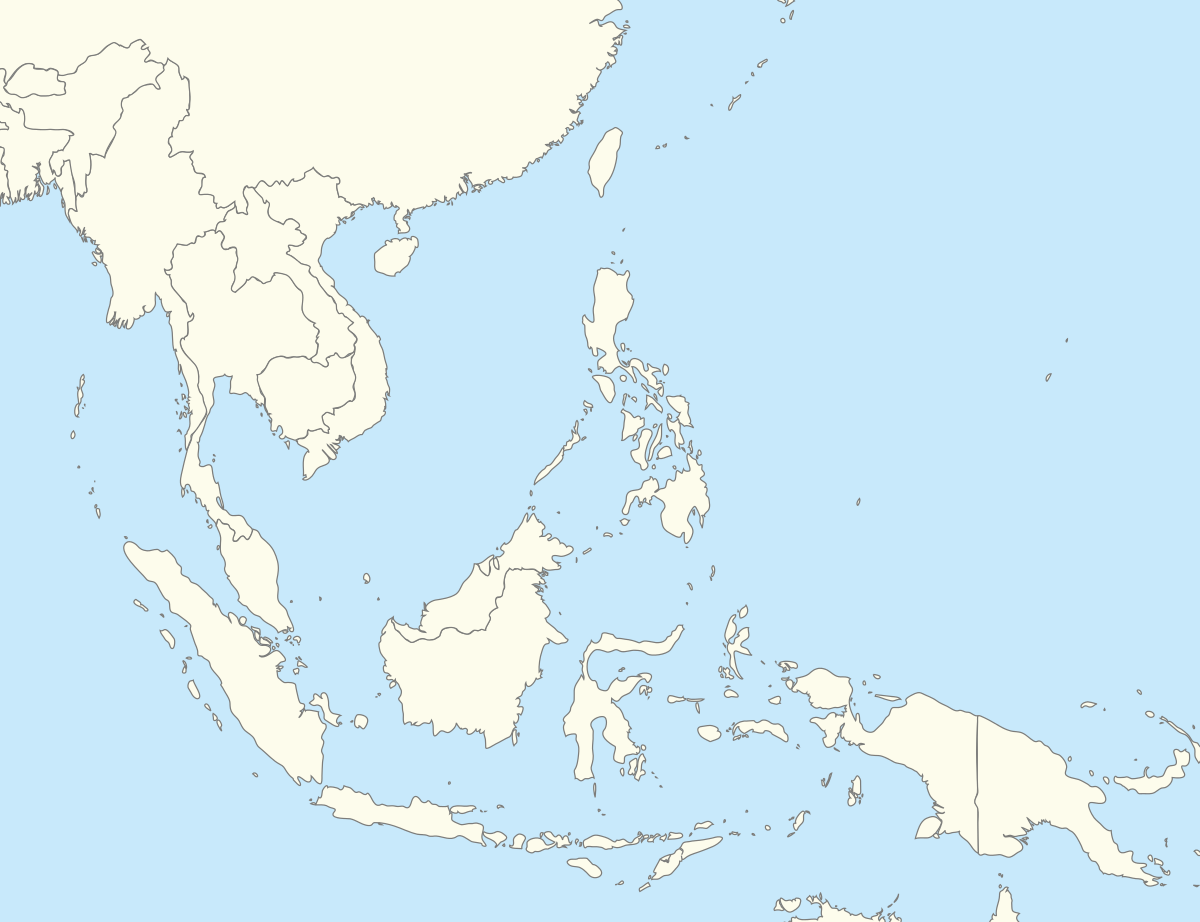Ma'ya language
Ma'ya is an Austronesian language spoken in West Papua by 6,000 people. It is spoken in coastal villages on the islands Misool, Salawati, and Waigeo in the Raja Ampat islands.[3] It is spoken on the boundary between Austronesian and Papuan languages.[4]
| Ma'ya | |
|---|---|
| Native to | Indonesia |
| Region | Raja Ampat Islands |
Native speakers | 5,000 (2000–2001)[1] |
Austronesian
| |
| Language codes | |
| ISO 639-3 | Variously:slz – Salawatikgb – Kawelcc – Legenyemwuy – Wauyai |
| Glottolog | raja1258[2] |
 Ma'ya | |
| Coordinates: 0.86°S 130.65°E | |
Dialects
Ma'ya has five dialects, three on the island of Waigeo (Laganyan, Wauyai, and Kawe), one on Salawati, and one (extinct or nearly extinct) on Batanta. The prestige dialect is the one on Salawati. The Waigeo dialects have /s/ and /ʃ/, where the varieties spoken on Salawati and Misool have /t/ and /c/ respectively. Batanta, now extinct, was evidently unintelligible with its neighbours.[3]
On Waigeo Island, there are three dialects:[5]:6
- The Kawe dialect in Selpele and Salyo villages in the northwest part of the island.
- The Laganyan dialect is spoken in Araway, Beo, and Luptintol villages on the Mayalibit Bay coast.
- The Wauyai dialect is spoken in Wauyai village on the Kabui Bay coast.
Tone
Both its tone and stress are lexically distinctive.[3][6] That means both the stress and the pitch of a word may affect meaning. The stress and tone are quite independent from one another, in contrast to their occurrence in Swedish and Serbo-Croatian. It has three tonemes (high, rising and falling). Out of over a thousand Austronesian languages, there are only a dozen with lexical tone; in this case it appears to be a remnant of shift from Papuan languages.
Lexical tone is found only in final syllables.[7]
See also
- Matbat language, a neighboring language with more extreme Papuan influence and five tones.
References
- Salawati at Ethnologue (18th ed., 2015)
Kawe at Ethnologue (18th ed., 2015)
Legenyem at Ethnologue (18th ed., 2015)
Wauyai at Ethnologue (18th ed., 2015) - Hammarström, Harald; Forkel, Robert; Haspelmath, Martin, eds. (2017). "Raja Ampat Maya". Glottolog 3.0. Jena, Germany: Max Planck Institute for the Science of Human History.
- Remijsen, Bert (2001). "Dialectal Variation in the Lexical Tone System of Ma'ya". Language and Speech. 44 (4): 473–499. doi:10.1177/00238309010440040301. PMID 12162695.
- Remijsen, Bert (November 2003), "New Perspectives in Word-Prosodic Typology" (PDF), IIAS Newsletter #32, p. 29, archived from the original (PDF) on 2011-06-11
- Arnold, Laura Melissa (2018). Grammar of Ambel, an Austronesian language of Raja Ampat, west New Guinea (PhD). University of Edinburgh. hdl:1842/31120.CS1 maint: ref=harv (link)
- Rivera-Castillo, Yolanda; Pickering, Lucy (2004). "Phonetic Correlates of Stress and Tone in a Mixed System". Journal of Pidgin and Creole Languages. 19 (2): 261–284. CiteSeerX 10.1.1.538.9834. doi:10.1075/jpcl.19.2.02riv.
- Arnold, Laura. 2018. ‘A preliminary archaeology of tone in Raja Ampat’. In Antoinette Schapper, ed. Contact and substrate in the languages of Wallacea, Part 2. NUSA 64: 7–37. doi:10.5281/zenodo.1450778
Further reading
- van der Leeden, Alex (1993). Ma'ya: Phonology. Lembaga Ilmu Pengetahuan Indonesia. p. 97. ISBN 9789798258015.